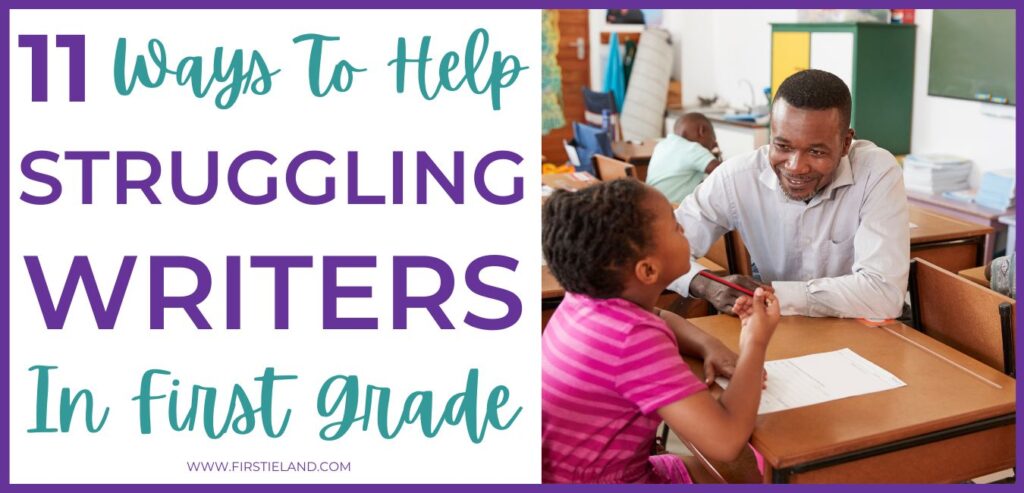
Writing can feel daunting for struggling writers in first grade, but it doesn't have to be! Many first graders are just starting out on the journey of becoming writers, and your struggling writers may need special help getting off on the right foot.
From setting clear expectations to using tools like anchor charts and mentor texts, teachers have many writing resources at their disposal. In this blog post, we'll discuss how teachers can give their first grade students the support they need to become successful and reach their writing goals.
Students need a good foundation for writing
It’s no surprise that many young children are reluctant writers. Learning to write is a difficult process, and often the biggest barrier for these young learners is they don’t even know where to start. Learning how to form letters on paper is a critical skill that forms the foundation for writing development. When students can recognize and produce letters correctly, they'll be able to accurately spell words and eventually create sentences on their own.
Students also need to be able to recognize the sounds of each letter. When young writers are just getting started they must sound out words in order to write them. Without the proper foundation in letter sounds this will definitely slow the writing process for students. You may need to revisit letters and sounds with your struggling writers to help them get that good foundation for writing.
Start with easy writing activities
It's important to start your writing lessons with easier types of writing and then move on to more challenging genres throughout the year. One of the first writing activities you should do in first grade is labeling a picture. You can start this on the first day of school by having students label a simple picture of a school bus or a playground.
Another great way to do this is to have students draw their own pictures to label. You can create an anchor chart like this one that shows students how to label a picture. Hang this in your classroom for students to use as a reference when they are first learning how to label.
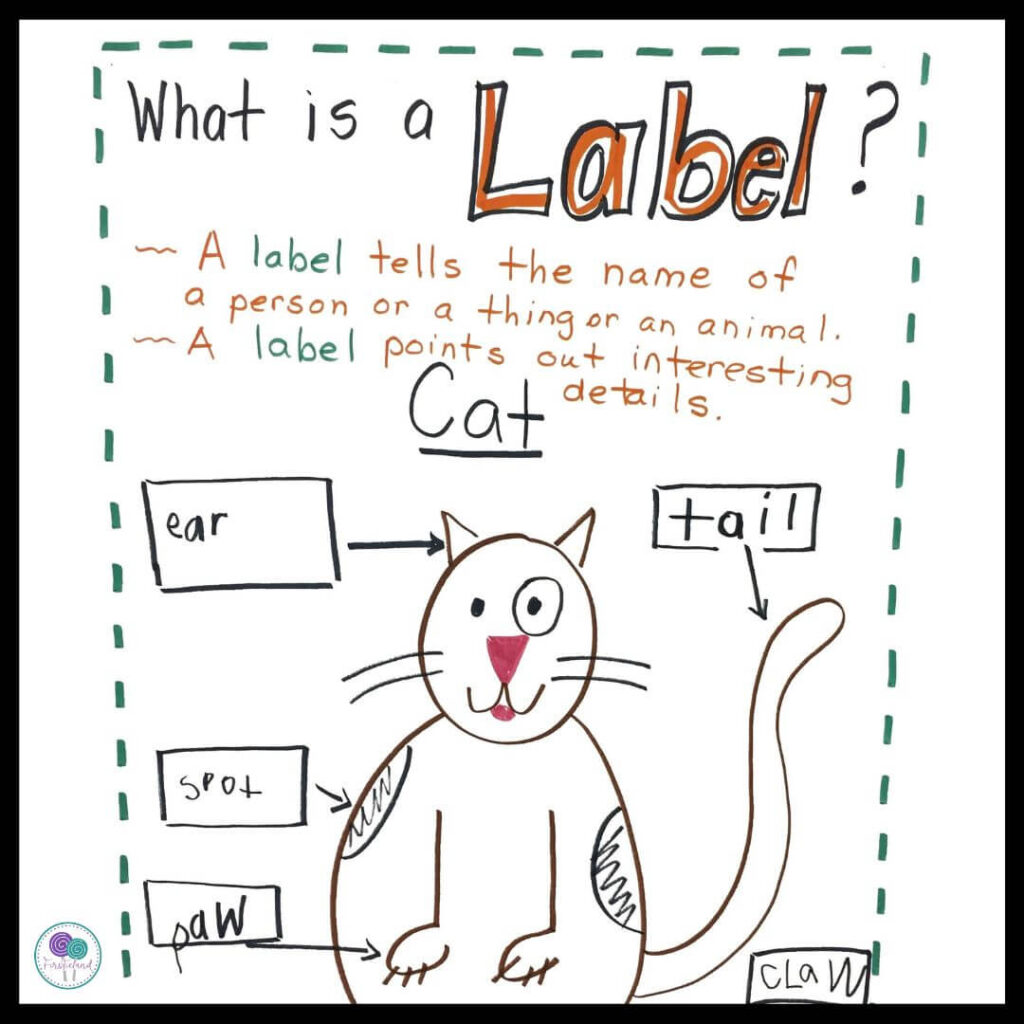
Labeling gives students the opportunity to use the skills they've learned about letters and sounds. They can sound out simple words that they see in a picture such as a sun, bird, or bus, and write the words next to the pictures. This reinforces to students that letters make sounds and sounds become words. When we begin to write words on our own we are becoming writers.
Once students have mastered labeling a picture you can move on to writing lists and eventually writing a sentence.
Teach students how to write complete sentences
When you're ready to have students move on to writing a sentence, you'll need to model exactly what this looks like. Students will need time to practice this as a complete sentence is truly the foundation of all good writing. Create an anchor chart that shows students all the parts of a sentence. Students should be taught that sentences begin with capital letters, have spaces between words, and end with some sort of punctuation.
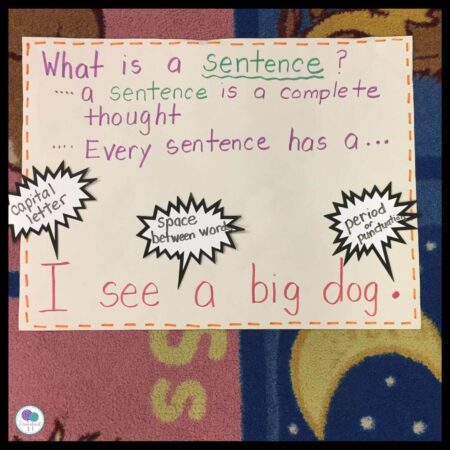
Once students have mastered writing sentences they'll be able to begin moving on to more challenging writing genres. Over the course of the school year, you will teach your students how to write personal narratives, procedural writing, opinion writing, friendly letters, and informational reports.
Model the writing process for students
When teachers model writing for their students, it can give them an edge in learning how to become strong writers. This is especially true for struggling writers in first grade. Explicit instruction and modeling give children the opportunity to see how a piece of writing should be structured and organized from start to finish.
By watching the teacher put ideas on paper and transform those ideas into well-written sentences, students learn strategies they can use when they are faced with their own assignments. Students also benefit by observing how the teacher handles grammar, punctuation, and spelling so that they can apply these skills in their own writing.
The best way to model writing for students is to use a large piece of chart paper or write on your dry-erase board. Explain to students what you'll be writing and exactly how you will do it. Think out loud for the students.
Say things like “I'm going to write a sentence about my pet. I want to write I have a big black dog. Hmmm, let me count how many words I'll be writing. I-have-a-big-black-dog. That's 6 words. When I finish writing I should have six words. Then as you're writing point out when you use a capital letter, leave spaces, and put a period at the end of your sentence.
As you introduce each new writing genre, model exactly how to do it for your students.
Help students who have difficulty with fine motor skills
If you have a student who is having trouble properly holding a pencil, there's no need to worry. Thankfully, there are plenty of great ways to help them out. Occupational therapy can be highly effective in helping children learn the proper grip for writing. An occupational therapist will assess their fine motor skills and strength, which can greatly help when it comes to developing a good pencil grip.
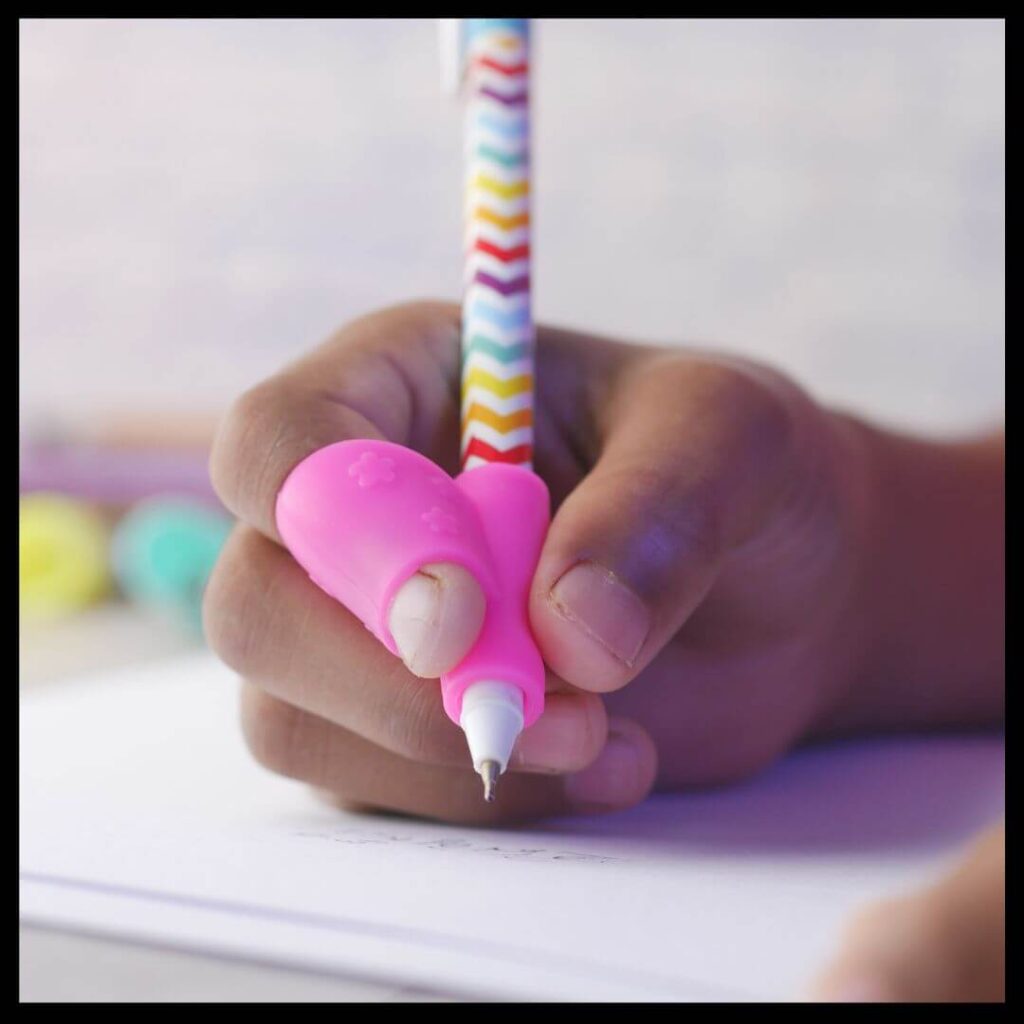
For those who don't have access to an occupational therapist, you can help the students who struggle with fine motor skills. Start by getting them a small pencil with a soft grip on it; this will make it easier for their little hands to hold onto comfortably.
Have them practice gripping the pencil firmly with their thumb and index finger while keeping the other fingers slightly bent — this should be enough pressure for them to comfortably write without hurting themselves or putting too much pressure on the paper. You can buy pencil grips on Amazon or just use a rubber band that has been wrapped around the pencil a few times.
Use creative writing prompts to help struggling writers in first grade
For kids at the first-grade level, the idea of writing can be daunting. It takes a lot of effort to turn their ideas into words on paper. One easy way to get them over that hump and start building their confidence with writing is by giving them a writing prompt.
A writing prompt is an idea or suggestion that helps spark a child's imagination and gets them to create something original. By providing an interesting topic for them to explore, you will help your student develop the skills needed for more complex forms of writing later on. With a fun prompt, students may even find themselves enjoying the process and wanting to write even more!
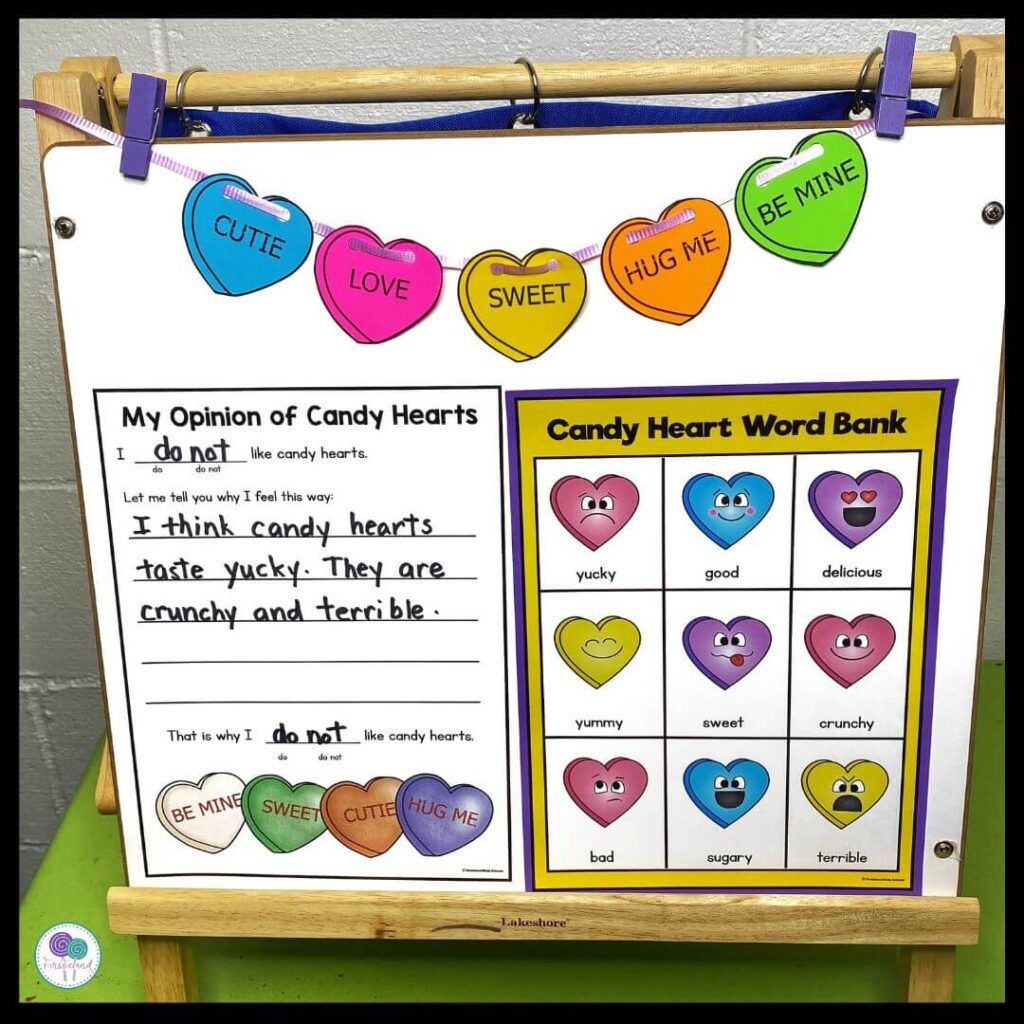
You can use writing prompts to help students write an opinion piece, the steps for completing a task, an informational report, or other different types of writing. The use of prompts encourages creativity and allows your elementary students to practice expressing their ideas in different ways.
Make writing fun for students
Another way to help struggling writers in first grade is to make it fun for them. When writing is a challenge for students it's the last thing they want to do. Adding an element of fun to your lesson plans can spark a child's enthusiasm to practice writing. There are lots of ways to add some fun to your writing mini-lessons. Choose a great mentor text to begin your lesson to help get kids interested in the topic.
Other great ideas include using technology to spark interest or having students write about their favorite things. Some of my favorite writing lessons include tasting different foods or candy and writing our opinion. What kid can resist that?
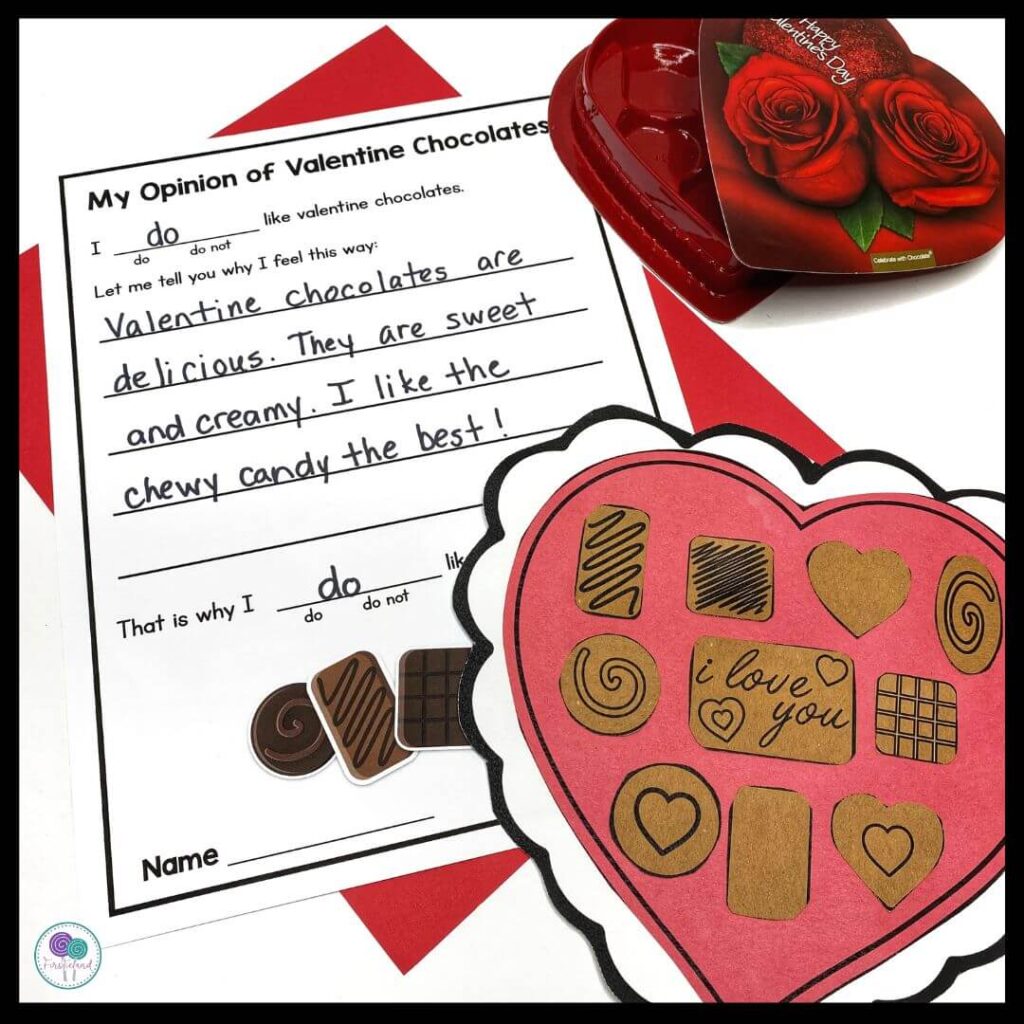
Write every day
All students need daily practice to help them develop their writing skills. Daily writing practice is essential for young students and you can give them lots of opportunities for practice. Daily journal writing is one way to squeeze a little writing instruction into your day. We use these journals that have different writing prompts for each month. The students love the different topics and know what to expect so writing becomes easier for them.
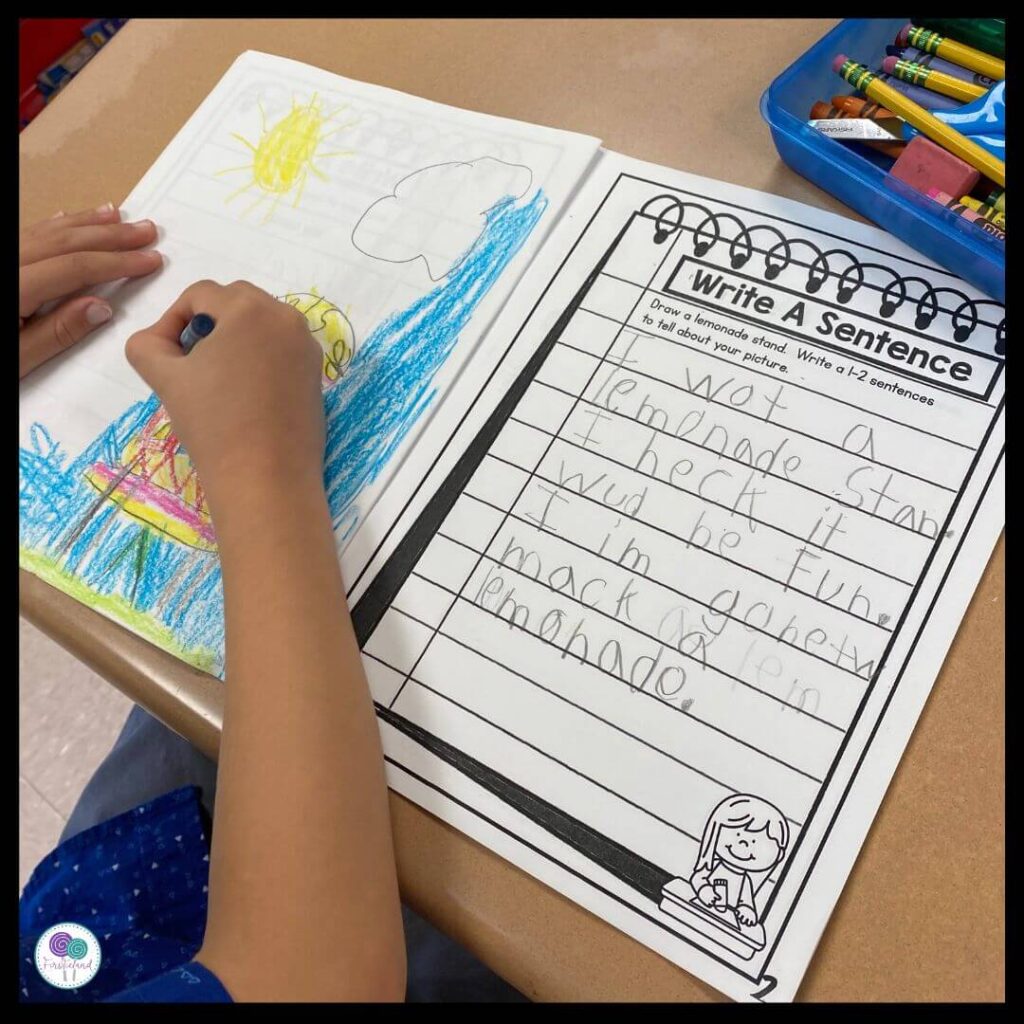
I love having the matching google slides that I can project only my board to use for instruction. It makes it so nice for students to follow along in their journals.
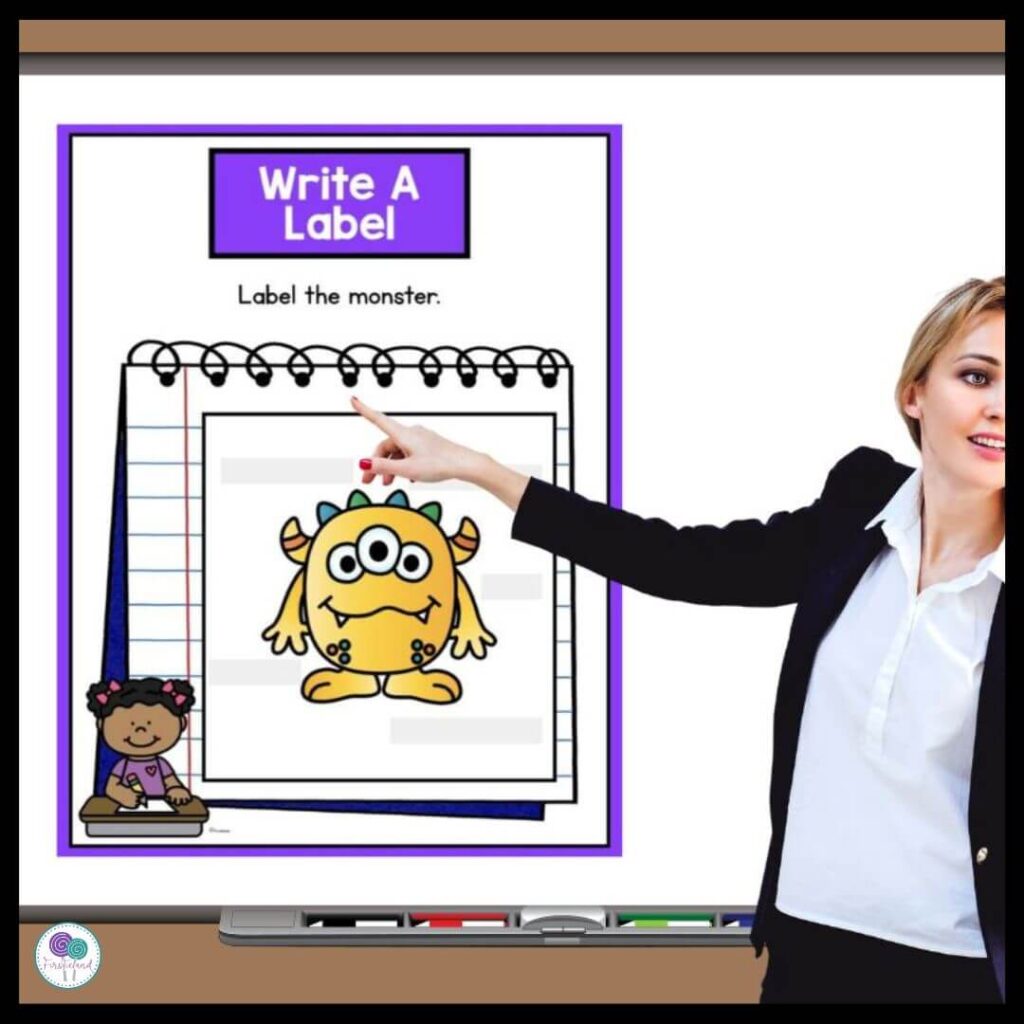
Another way to get students to write every day is by having a writing center in your classroom. You can include things like greeting cards, letter writing templates, blank note cards, fun pens and pencils and other cute writing templates that students can choose from. The writing center can be one of your student's favorite places to visit during literacy centers and gives them the opportunity to practice writing every day.
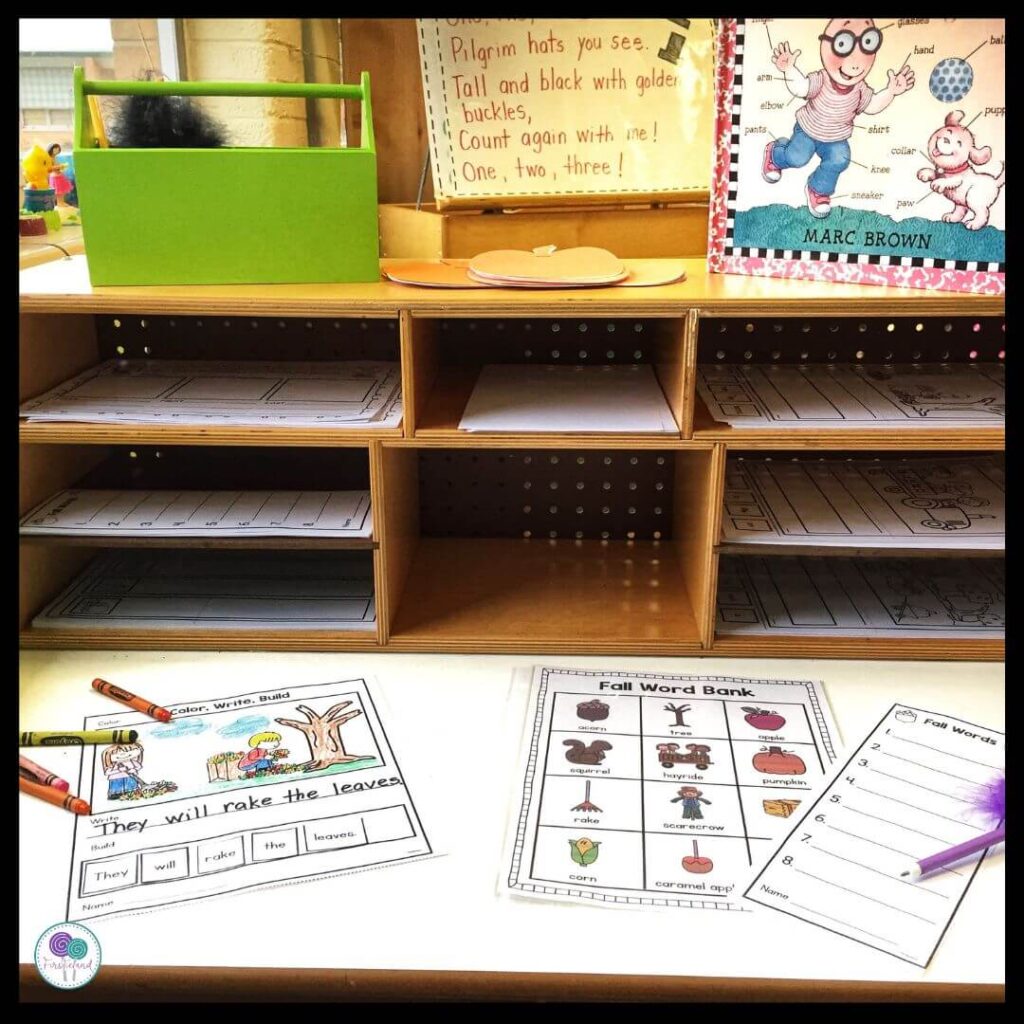
Differentiate your writing instruction for struggling writers in first grade
If your students lack confidence in writing it may be necessary to differentiate your writing lesson. When teaching in whole groups be sure to call upon your struggling writers to help you in shared writing. Have them help you write words and sentences on the board so that they will feel more confident when they are writing on their own.
If kids struggle when writing independently show them ways to make it easier. For instance, if a student is struggling to write a sentence have them tell you what they want to write. Try to keep it at 5 words or less and then make lines for each word they want to write on their paper. Tell them to write their words on the lines and it will help them remember what they wanted to write.

Divide your class up into small groups of students who are working at the same level. Differentiate your writing lesson by having them all write about the same topic but working at different levels. As an example, you may have students write about polar bears. Maybe you will have one table working on labeling a polar bear while another table is drawing a picture of a polar bear and writing one sentence to go with it. You may even have another group writing reports about polar bears. When you differentiate in this way it gives every child opportunities to practice writing at their own level.
Use technology in your writing instruction
We all know kids love computers so use this to your advantage when working with struggling writers in first grade. Students can use google slides like these to practice labeling pictures, making lists, and writing stories. Your students can learn new skills and become better writers while having fun on the computer.
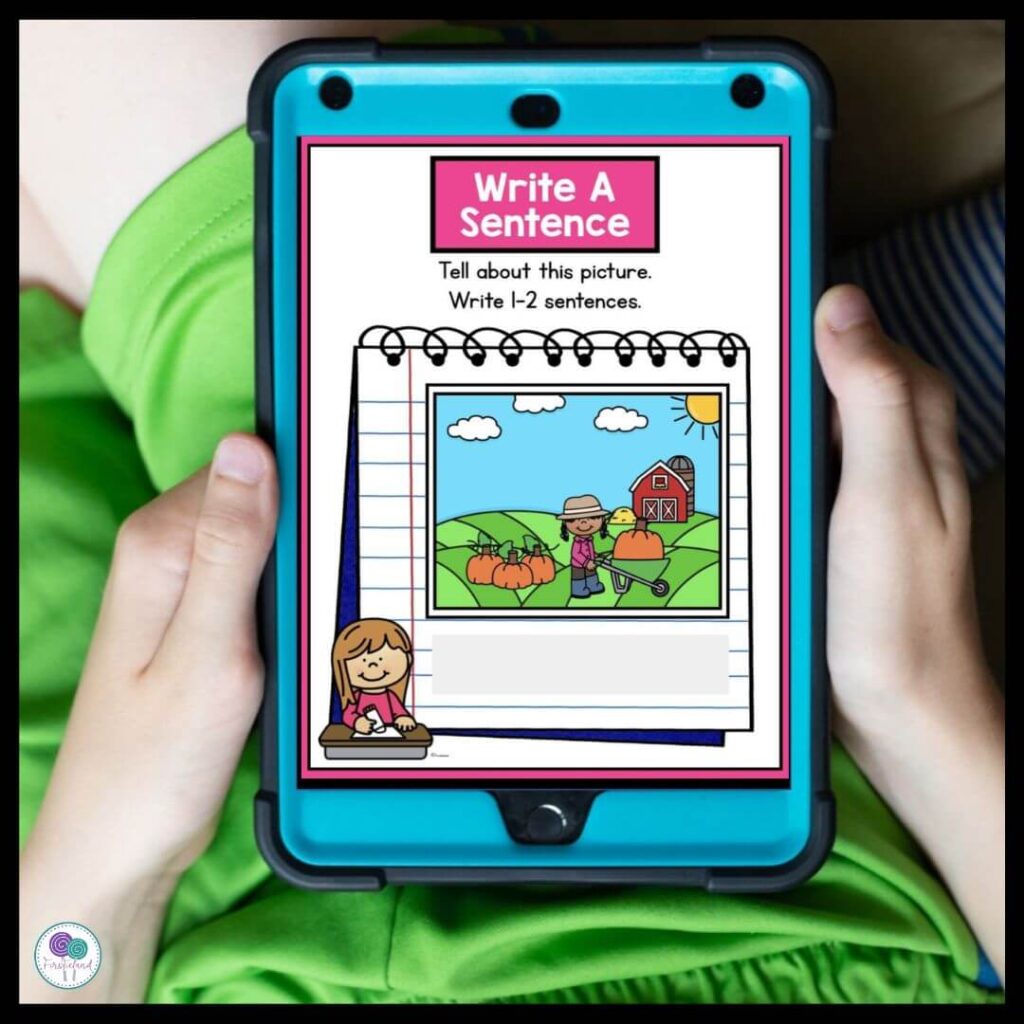
Give your students lots of positive feedback
Struggling writers worry that their writing isn't good enough. Giving lots of praise for their good work is the easiest way to get your 1st graders excited about writing. Tell them how proud you are and how much you enjoy reading their writing. Praise them when they remember to put a capital or spaces between their words. Hang their student work in the hallway for all to see.

Keep students' writing portfolios for each child and sit down with them a few times a year to look back at their work. Praise them for how far they have come and tell them to keep up the good work. Giving positive feedback to struggling writers in first grade is one of the most important ways to give them confidence in their writing.
Grab everything you need here
If you're ready to dig in and help those struggling writers in first grade, this resource is packed full of engaging writing prompts your students will love. This first grade writing bundle is a fantastic resource for young writers, offering monthly writing prompts and daily journal activities that can help both on-level and struggling students in the classroom.
This resource provides engaging and age-appropriate writing prompts that cover a wide range of topics, from personal narratives to informative and persuasive writing. The daily journals encourage students to write freely and creatively, allowing them to build their writing skills in a low-pressure environment. With a focus on fun and creativity, this first grade writing bundle is a valuable tool for any teacher looking to inspire and support their students' writing development. Click here to take a closer look.
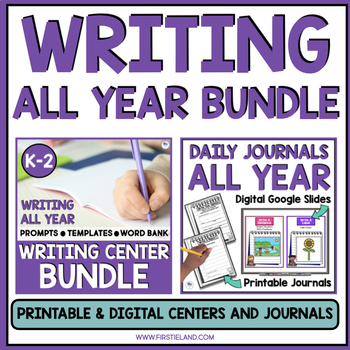
Looking for more writing tips and strategies? Take a look at these posts:
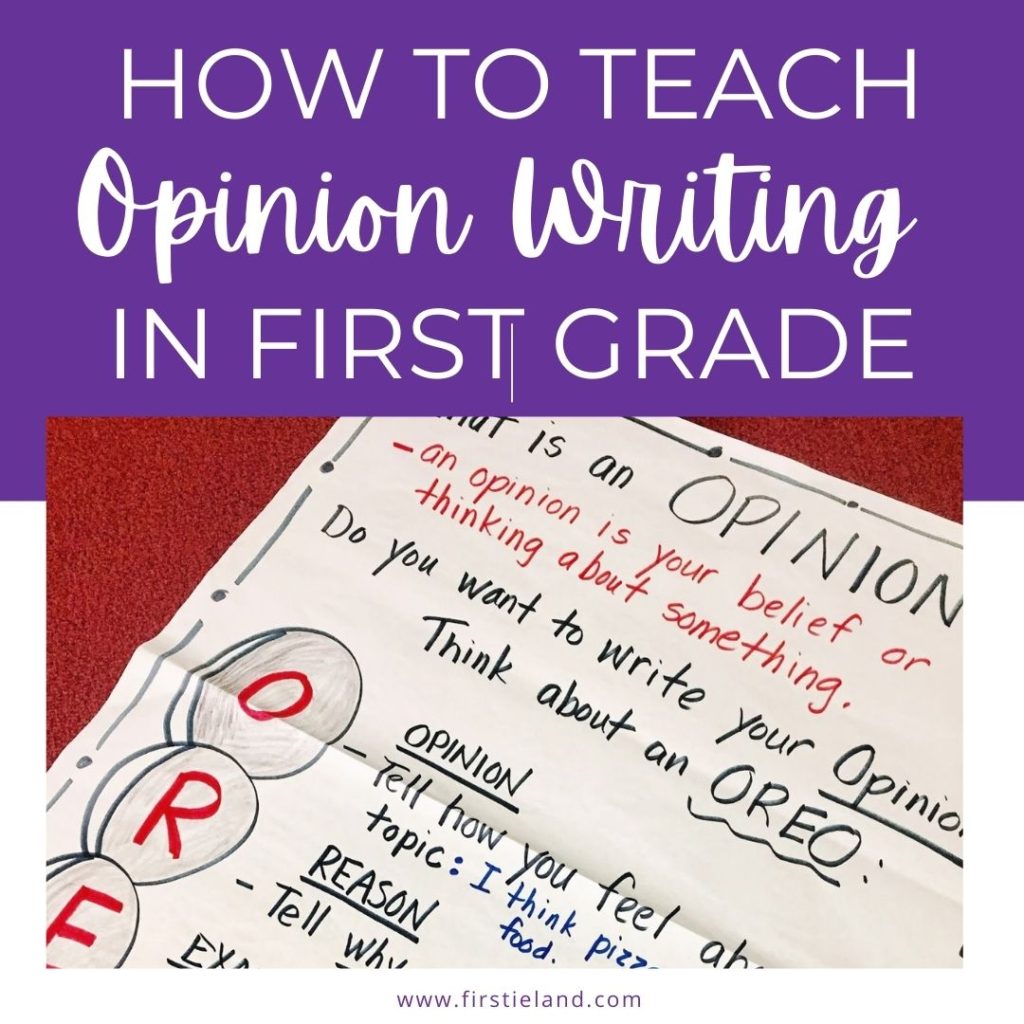
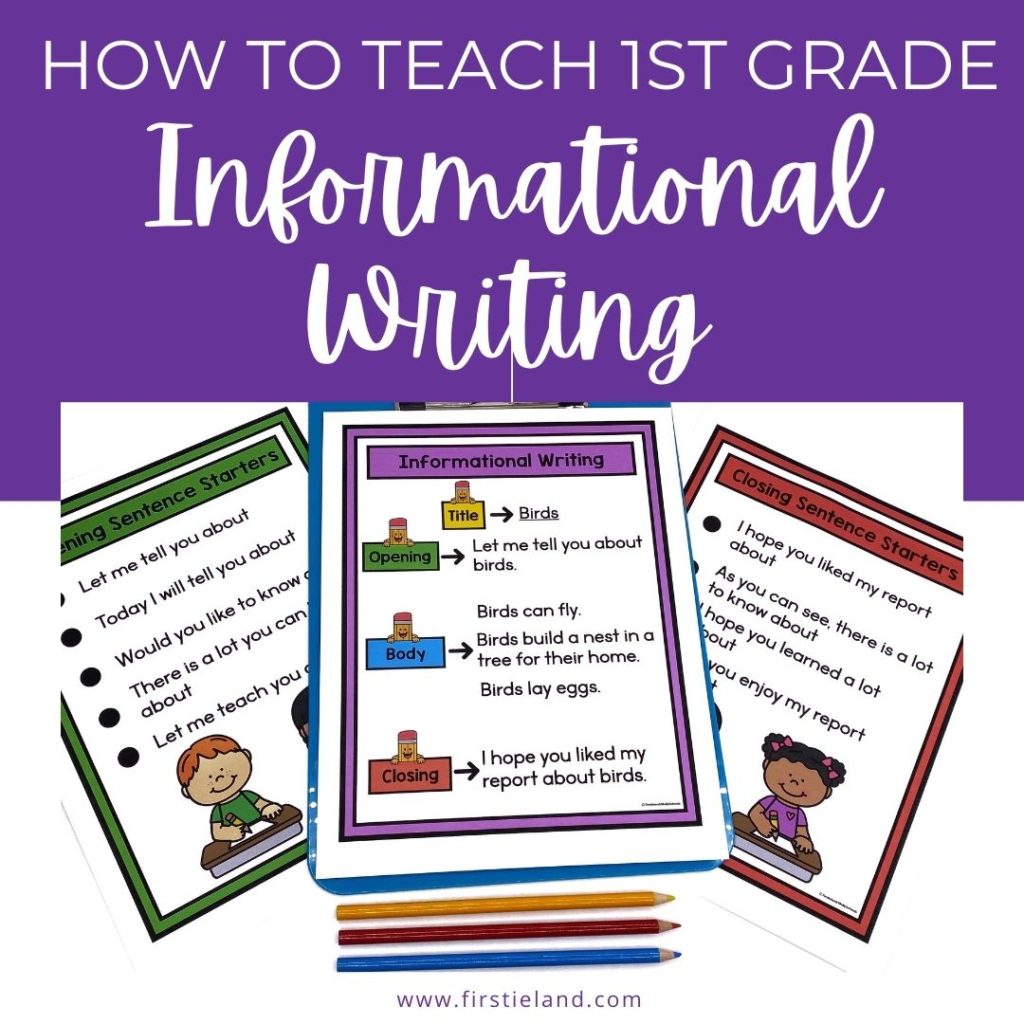
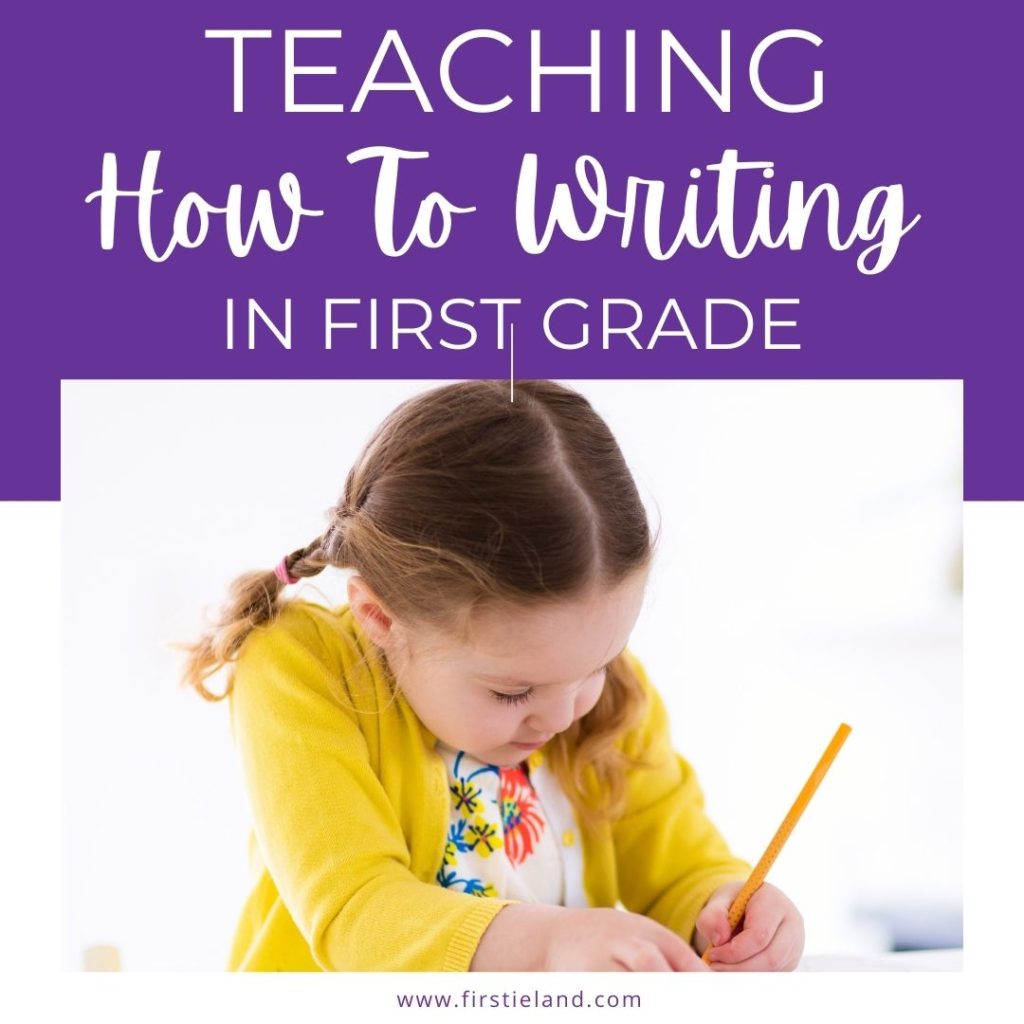
SAVE THESE IDEAS
Take a minute to save these tips to your favorite first grade writing Pinterest board so you can remember them later!

